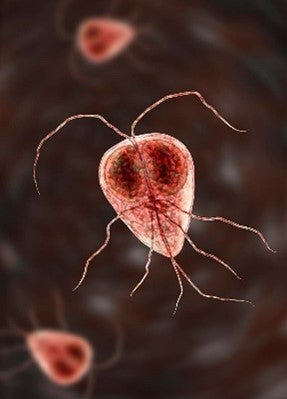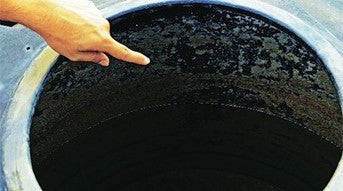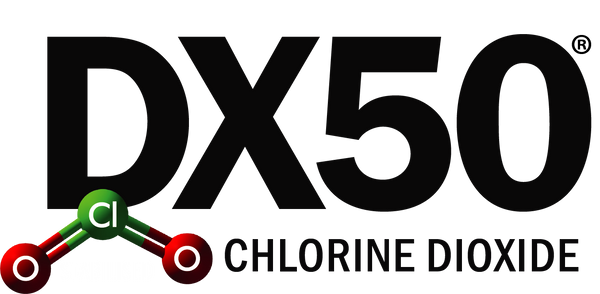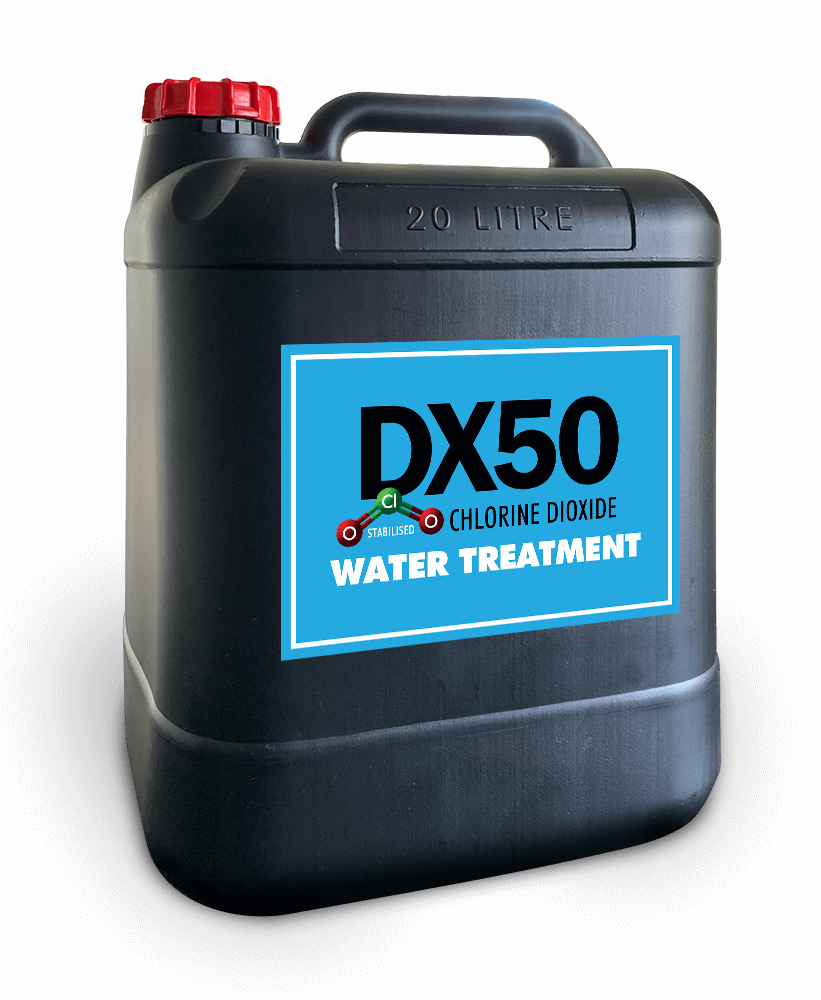
How to Sanitise your rainwater tank
Share
Updated on 27/04/23
Simple measures to ensure your water supply is safe to drink

If you depend on rain, creek or bore water for your household water supply it’s important to implement some simple measures that will keep you and your family safe.
Foul smelling or discoloured water will likely be contaminated and could make someone sick, especially those with low immunity.
No-one wants an upset tummy from your tap water, especially when all it needs is a quick dose of DX50 Water Treatment to make it safe to drink.
If you’re responsible for the collection and provision of drinking water to your property, here are a few simple tips to keep your water supply contaminant free.
1. Check what’s in your water tank
Drinking rainwater collected from a roof is not as clean and healthy as many assume.
Rainwater will carry every bit of dirt and nasty that’s on your roof, along your guttering and downpipes, right down into your water tank.

This includes bird and animal poo, rotting leaves, mould, dust, smoke and debris, as well as any substances from the roofing materials like asbestos, lead, and copper.
Every rainwater tank will have microorganisms, but certain conditions can tip the balance. Dry hot spells can heat a tank to create an ideal breeding ground for bacteria to multiply. And drinking water with high concentrations of nasty bugs like E.coli can really make you sick.
To reduce serious risk to your health, it’s important to inspect your rainwater tank regularly for sediment levels, smell, and colour, and to clean the tank and sanitise it as needed.
If you’re not sure, get the water tested. Regular testing using a drinking water testing kit (available from DX50) will confirm if there are harmful microorganisms and other contaminants in your tank that might need further investigation.
2. Consider reducing the risk
How water is collected, filtered, stored, and maintained on your property will likely differ from your friends and neighbours. So, it’s worth finding out how your particular system works, and what you can do to reduce contaminants entering the tank.
A well set-up system with quality gutter guards, first flush diverters, filtration, pumps, and a water sanitiser solution (DX50 Water Treatment) solution will help ensure the safety of your drinking water.
The Health Education website has some helpful information on how you can reduce contamination risk and improve the quality of your roof-collected rainwater. The booklet on Household Water Supplies also provides in-depth information on the selection, operation, and maintenance of your householder water system.
For many properties, a system upgrade might not be possible or affordable. In these situations, the quickest and most cost-effective option is to simply treat your tank with a good water sanitiser.
3. Sanitise your water tank
Sanitising your tank and reducing the risk of water contamination doesn’t need a

degree in rocket science.
There are several water treatment options you can consider, and each have their pros and cons.
The approved and friendly water sanitiser DX50 Water Treatment is one of the safest, simplest, and most cost-efficient water sanitising options available.
Chlorine is a well-known option, but it’s been getting a bad rap lately because it tastes awful, leaves harmful residues, is corrosive to plumbing and pathogens can build resistance to it.
UV systems are expensive to install and maintain, plus UV can’t penetrate large particles; and boiling water is costly in the long run and not very practical.
DX50 Chlorine Dioxide Water Treatment doesn’t leave a nasty taste, smell, or harmful residues, it’s safe for humans, animals, plants, and the environment. It is also very easy to apply. Importantly, because chlorine dioxide destroys and breaks down biofilm fast, pathogens are unable to build resistance to it.
How to treat your water tank

Treating your drinking water with DX50 Water Treatment is easy and can be done in minutes. You just need a ladder, a measuring jug and maybe a calculator (depending on how good you are with math), then follow a few simple steps.
- Determine the size of your water tank. If it’s not marked on your tank, visit one of these sites for help with calculating the capacity of your tank:
- Once you know the capacity of your tank, you then calculate how much DX50 you need to add. The dose is just 0.05ml per litre of water (50ml per 1000Ltr of water). So, for example, if you have a 30,000L tank you’ll need to apply 1500ml of DX50. (30,000L x 0.05ml = 1500ml).
- If your tank is half full, adjust the dose accordingly. (15,000L x 0.05ml = 750ml).
Note: you can dose your tank up to x10 more than the recommended dose and still meet NZ potable water guidelines (2008).
- Open the lid of your tank.
- Open your DX50 Water Treatment and, using a measuring jug, measure out the correct amount of DX50.
- Close the DX50 container lid properly. Empty the measuring jug directly into your tank.
- You can drink your water immediately after treatment, but for best results allow a few hours for DX50 to disperse and sanitise all the water in your tank.
- Store your DX50 Water Treatment in a cool secure cupboard away from direct sunlight.
- And voila! Your tank water is now clean, fresh, and safe to drink.
Even effective against E.coli and Giardia
DX50 Water Treatment is very powerful and kills pathogens fast, even the most harmful ones like E.Coli and Giardia which can develop resistance to chlorine.
The key ingredient of DX50 is chlorine dioxide (ClO2), which is a safe sanitising option used by utilities around the world to treat public drinking water, and recognised by the New Zealand Drinking Water Standard (NZDWS).


DX50 Chlorine Dioxide is often chosen over other water treatment options because is more effective at reducing unpleasant odours, tastes, and colours, and for removing mould and algae - even at low concentrations and over a wide pH range. It also removes biofilm from your pipework and helps to remove iron and manganese from untreated water.
Check, clean and treat

To maintain the quality of your drinking water, add reminders in your calendar to check and sanitise your water tank regularly - at least four times a year each season with the recommendation of once a month in the hot season.
Check other components in your water collection system and clean your rainwater tank of sludge build-up annually. If you have an older drinking water system, consider upgrading your components to prevent contaminants entering your tank and improve water safety.
If you’re unsure if your rainwater is safe to drink, don’t wait for smelly water and upset tummies to confirm your suspicions. Protect your loved ones and sanitise your water with DX50 Water Treatment.








